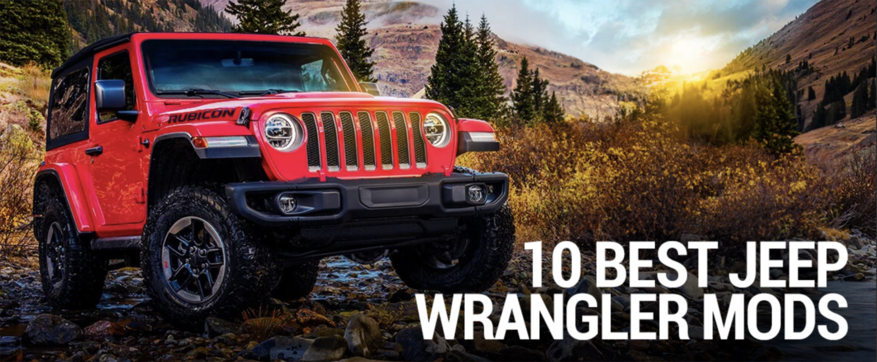by Matt Konkle
Managing Editor
So you decided to make that Jeep move. You did the research, picked a model, color, engine and top. You battled through negotiations, claimed victory, and now the spoil of all that effort rests comfortably near your house or apartment.
It is certainly an exciting thing, yet whether your prize is new or used; two-door Sport Wrangler, or a four-door Rubicon, that excitement could soon turn into confusion as you wade deeper into the Jeep life and try to figure out the next steps.
Do you head straight for the Internet and devour forum post after forum post about how your first mods should be a hardcore 4-inch suspension lift, massive alloy wheels, 37-inch off-road tires and a 12,000 lb winch? Stuff that surely will get you out on the trail as soon as possible whether you are ready or not? Or do you shun any modifications, instead choosing to be content with the vehicle ‘as is’; enjoying as much daily driving Jeep life as you can handle? Then again, what about finding some moderation and choosing something between those two options?
Definitely confusing.
And as a first-time owner, probably frustrating and intimidating too.
Well, in reality, you should know your Jeep road never has to be preset and more often than not, that third option works really well for nearly every first-time Jeep owner. By all means, though, if you have the knowledge, desire, and resources, to get your hands dirty immediately and build that next great trail-crushing Wrangler, then go for it. Have a blast! But if you don’t – if you are unsure what kind of steps to take in this larger new Jeep world – then a bit of caution should definitely rule as you get to know your new vehicle.
“It's easy to fall into the trap of some off-road shops where they say they have to put $20,000 into your vehicle before taking it (out),” says Kyle Buchter, President of Off-Road Consulting.
Buchter advises any first-time Jeep owner to take a basic off-road training class to learn what the vehicle can do and then decide what do you want to do with the vehicle.
“Are you planning to off-road once a month or once a year? “ he says. “Is this going to be your daily driver or toy? That determines where you need to go with modifications and upgrades. Always build the vehicle to fit your lifestyle.”
So, with that in mind, here is our list of top-10 affordable and essential modifications that first-time Jeep owners, in our experience, can easily and safely use to answer that ‘next steps’ question. There are certainly plenty of other great mods out there as well – just like there are opinions. And, like we said before, your Jeep path never has to be preset. But over the past several decades, we’ve built up this list as a great springboard into the Jeep Life.
Also keep in mind, if the vehicle you purchased is used but ‘new to you’, it may already have one (or more) of these modifications in place. If so, definitely make sure the part(s) are in good working shape or are something you like and want. If not, then remove and replace with something more in line with your taste.
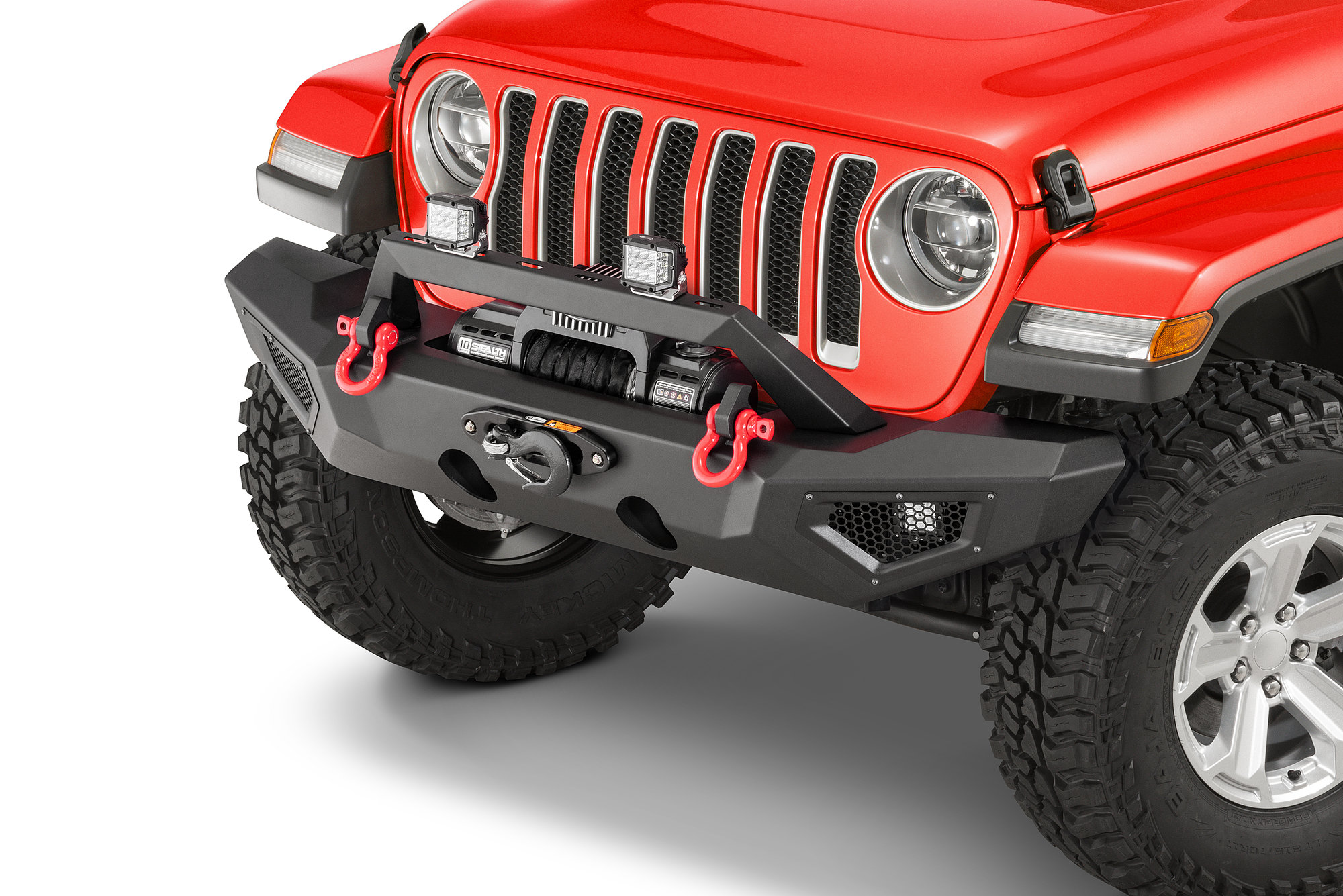
Front and Rear Bumpers
Why bumpers as a first modification, you may ask. Doesn’t the Jeep already have front and rear bumpers? Well, yes it does. But most factory bumpers are plastic and are about as useful during a collision as a jug of gasoline in a fire. So, for just about anyone, heavier-duty front and rear bumpers are one of the first modifications made. Not only for off-road use, but for everyday protection.
These days, bumpers come in a variety of styles and some are even modular — meaning you can add separate components like an overrider bar or extending fins for added protection, style as well as a spot to plant auxiliary lighting. Most bumpers also come with an integrated winch mount which may, or may not, be important to you.
The main styles of Jeep bumpers are as follows:
- Stubby – a shorter bumper about grille-width in length
- Mid-Width - stretching across most of the Jeep's face
- Full Width - Usually flare to flare coverage
- Tubular – a simple two-tube design that runs across the front, with some involving a hoop around the center for added protection
- Modular – a stubby-type bumper that has various optional components which can customize its look to your needs.
Aftermarket rear bumpers also are available in several different styles, and for most first-time Jeep owners ones having a strong tubular design, or full-length solid ‘rock’ style, will provide plenty of protection whether on- or off-road. Even a modular rear bumper type can certainly do the trick without crushing the pocketbook. For those who plan on adding larger tires down the road, some rear bumpers even will add a tire carrier component so you can keep that extra tire weight off the tailgate.
Additionally, changing over to aftermarket bumpers provide needed recovery points, and (in most cases) a rear-facing hitch so you'll have plenty of options to get your Jeep out of trouble should an issue arise.
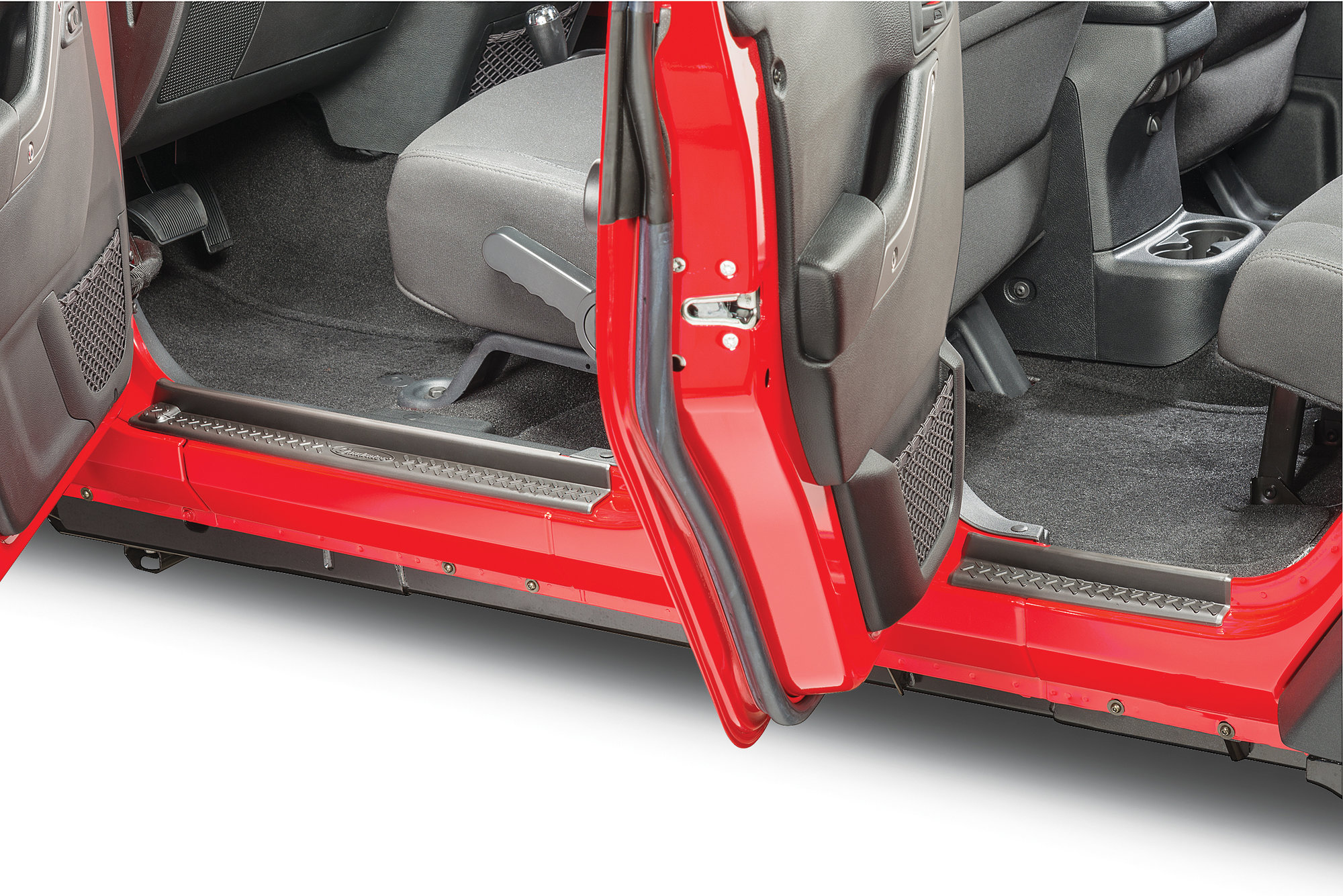
Entry Guards
Seems a little silly, doesn’t it? One of the most highly trafficked areas on your Jeep has nothing in place to protect the paint against scuffs and scratches. Your gas tank and transfer case have skid plates to protect them, but the door frame? Nothing.
Well, you don’t need a skid plate for your lower door area, just some low-tech and affordable door entry guards. These protective pieces install easily with most brands using 3M adhesive to attach, while utilizing thermoplastic, aluminum, or stainless steel material to protect the frame. Whether you plan on just daily driving, or venturing off-pavement, Jeep entry guards should definitely find their way on your punch list for an easy and affordable modification.
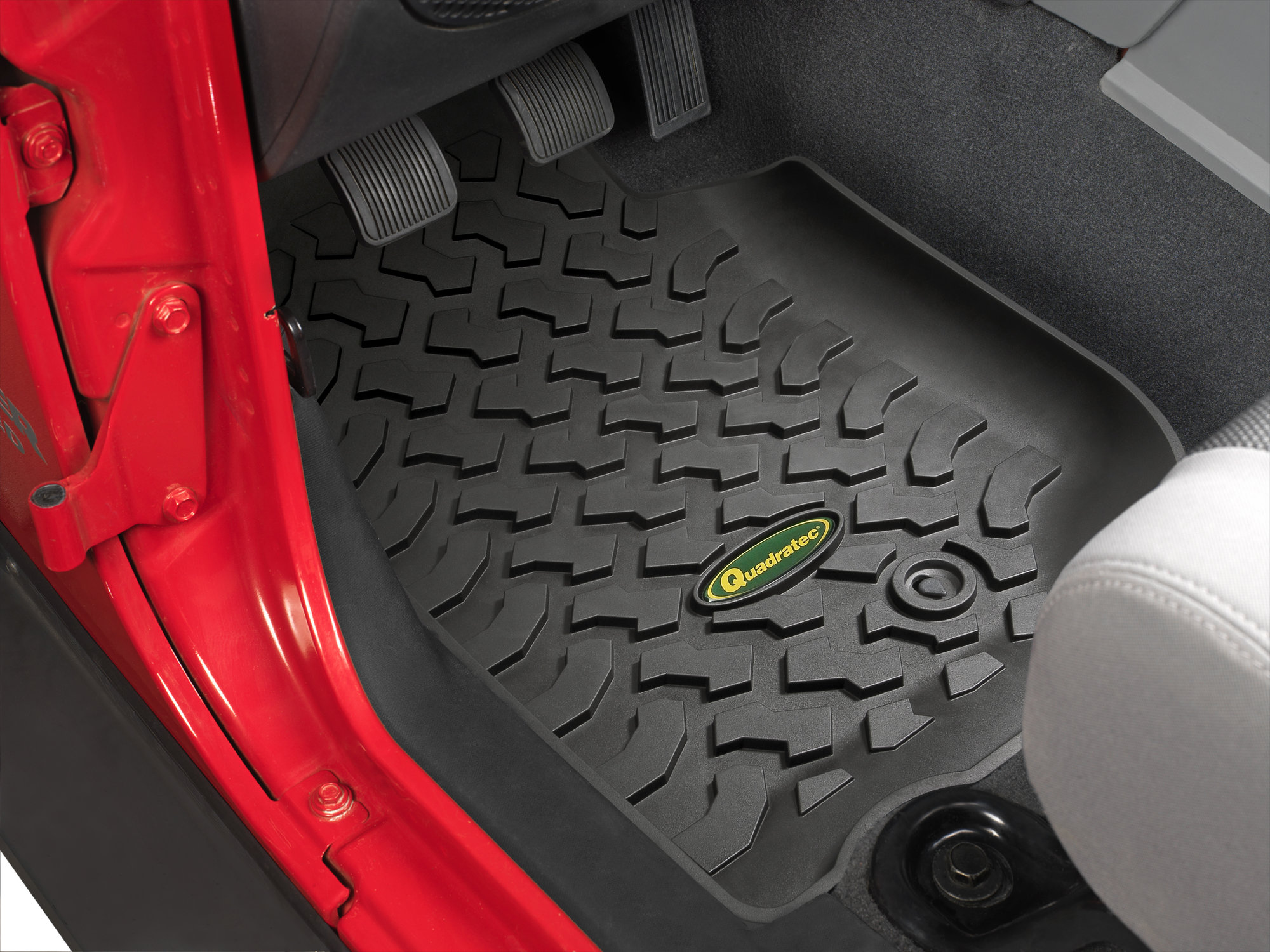
Floor Liners
As you are probably learning, most people consider their Jeep’s interior as a second home. And a great way to easily keep that second home ‘mess free’, especially in this on-the-go age, is a set of floor liners. Designed to fit over the factory or aftermarket carpet, floor liners are that glove which protects your interior from just about anything you drag into the Jeep - water, mud, snow, gum, grease, whatever.
Now, there are a few different types of liners out there such as:
- Carpeted mats that are stain-resistant and help guard against the everyday wear and tear your Jeep interior will see.
- Rubberized slush mats that have a grooved body to help trap moisture like mud or snow.
- All-weather heavy-duty liners that utilize a lipped outer edge and either a molded thermoplastic, or stain-resistant carpeted base to form a protective barrier - all while remaining easy to clean.
- Trail tough molded polyethylene liners which have a deep ‘tire type’ tread pattern and raised edge to totally protect from everything like mud to grease, while also remaining simple to clean.
Most liners also come in front, rear, and cargo styles so can get the protection you need throughout your Jeep.
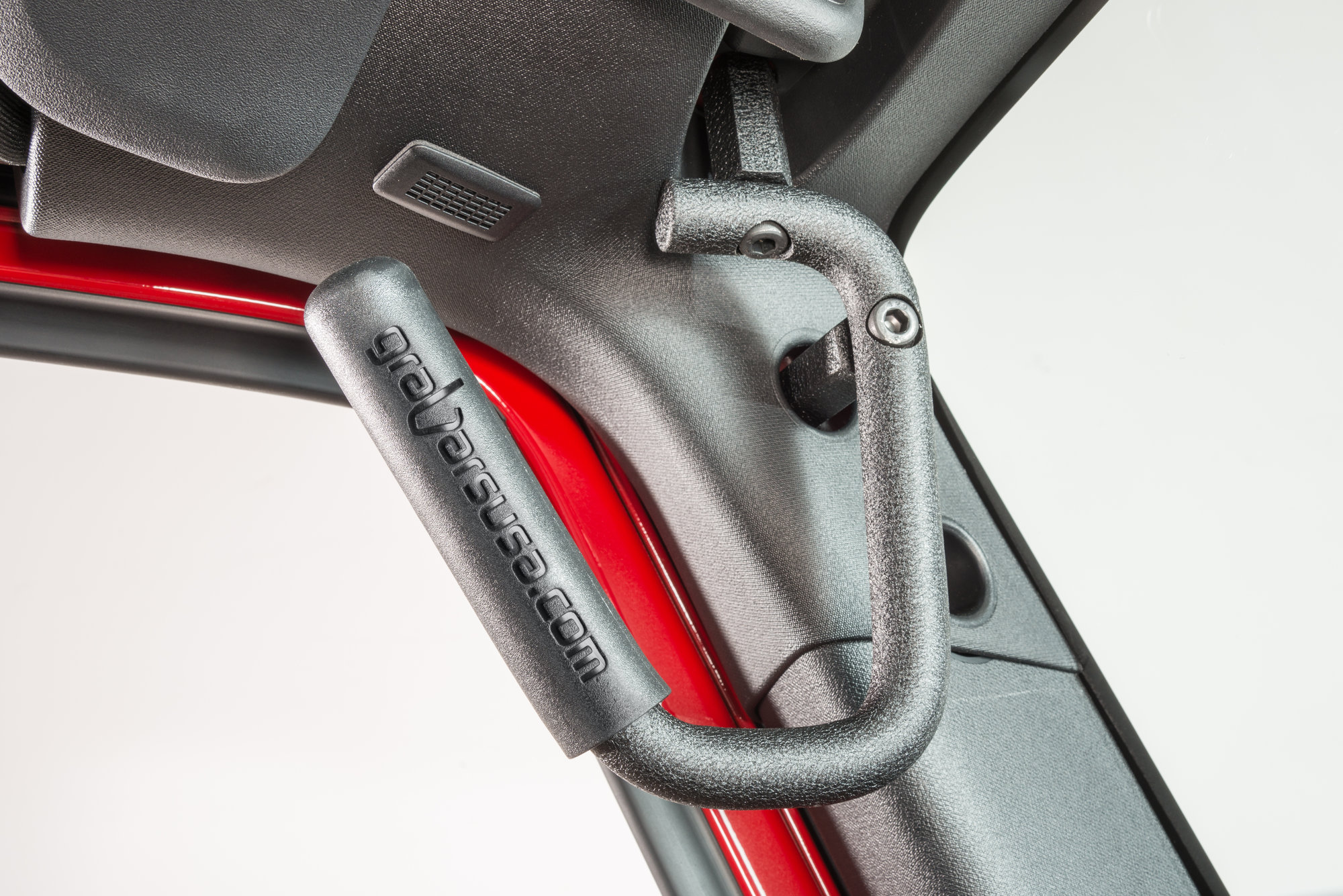
Grab Handles
Chances are you’ve previously owned a vehicle that had some type of handle above the passenger side and rear doors. You know the ones. The thing you clutched with a passion when the turn got a little too sharp or ride a bit bumpy. Yet in a Jeep, with its roll cage between you and the top, well, that kind of top-mounted handle really isn’t very feasible.
However, a Jeep’s roll cage actually offers a better-type handle solution – and so can the vehicle’s front A-pillars. With a Jeep, who needs a top-mounted grab handle when you can securely attach what you need to the roll cage or on the pillar? This way, not only can you grab the handle when needed, you can even use it for leverage when entering or exiting the vehicle — especially important for anyone with a suspension lift.
From simple nylon handles to deluxe strap versions with a foam grip, to heavy-duty Paracord, there are many affordable styles out there that either bolt into the cage, or use hook and loop straps around the roll bar. All provide smooth ‘grab-a-bility’ when the need arises. Or, depending on the vehicle year, you can look at a front-mounted piece like a GraBar, which are strong ¾” solid steel handles that bolt to your Jeep’s A-pillar.
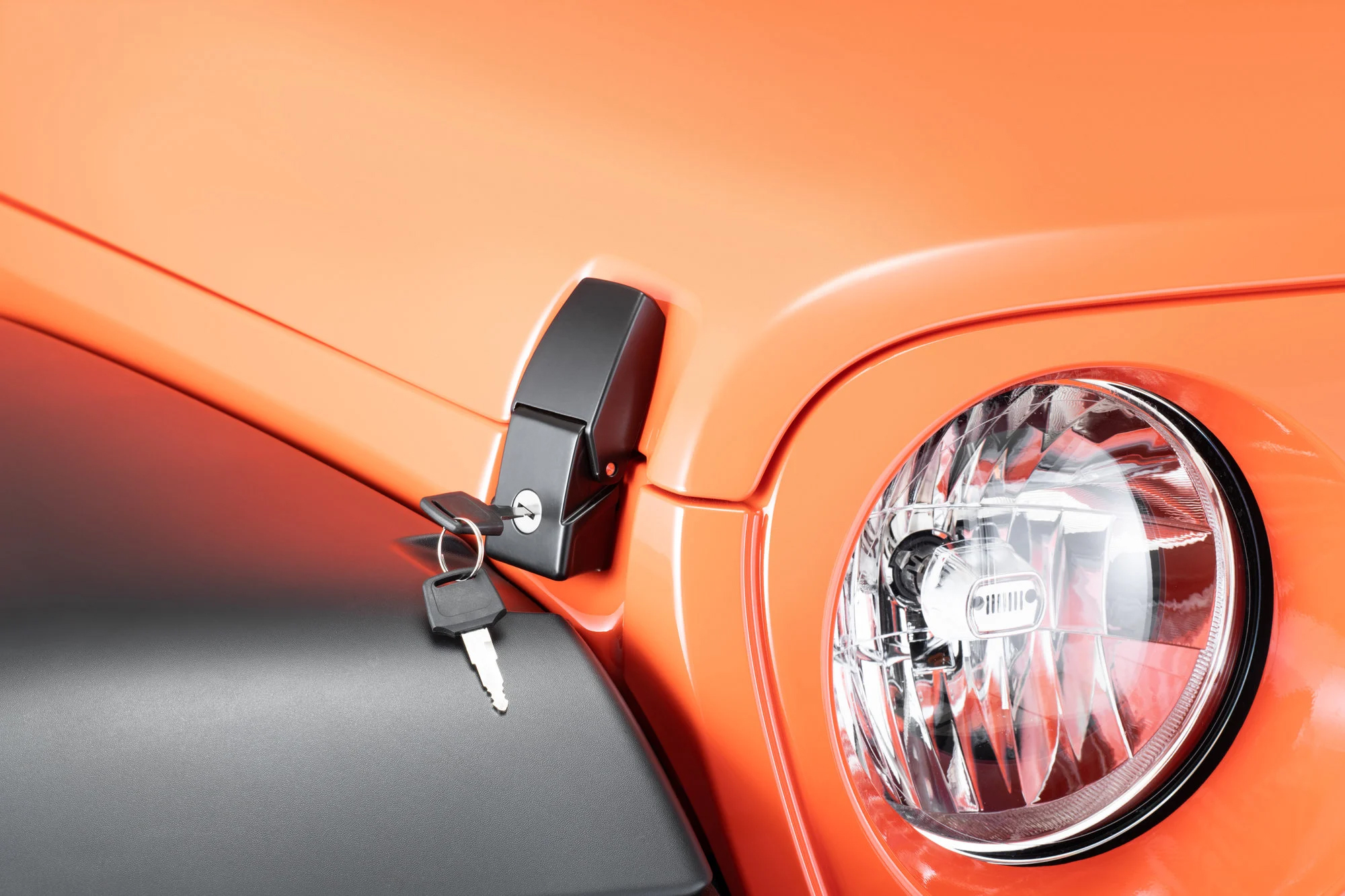
Replacement Hood Latches
For newer JL Wrangler owners, the factory hood latches are far superior than the older JK version. Let’s face it – if you have driven your JK Wrangler at anything faster than walking speed, you’ve probably noticed an alarming amount of hood movement. Translate that to highway driving, and you may feel like your hood will tear off at any second. The reason behind this is simply that the factory latches use a soft, stretchy rubber that isn’t able to keep the hood securely in place at higher speeds.
While the odds of your hood actually flying off because of latch failure is pretty remote, it certainly can be an unsettling and annoying distraction while driving. This is where aftermarket latches, like the popular Daystar Hood Wranglers, shine. Besides offering a few different ‘beefier’ ways to customize how your hood connects, these latch options utilize stronger materials to ensure that your hood stays in place during all driving conditions.
Whatever year Jeep you've purchased through, it may make sense to upgrade to some lockable latches. See, unlike standard cars, anyone can access your hood simply by undoing those latches. This provides ample access to engine bay stuff like batteries and air intake systems. By swapping to lockable ones though, it certainly provides some peace of mind and helps discourage would be thieves.
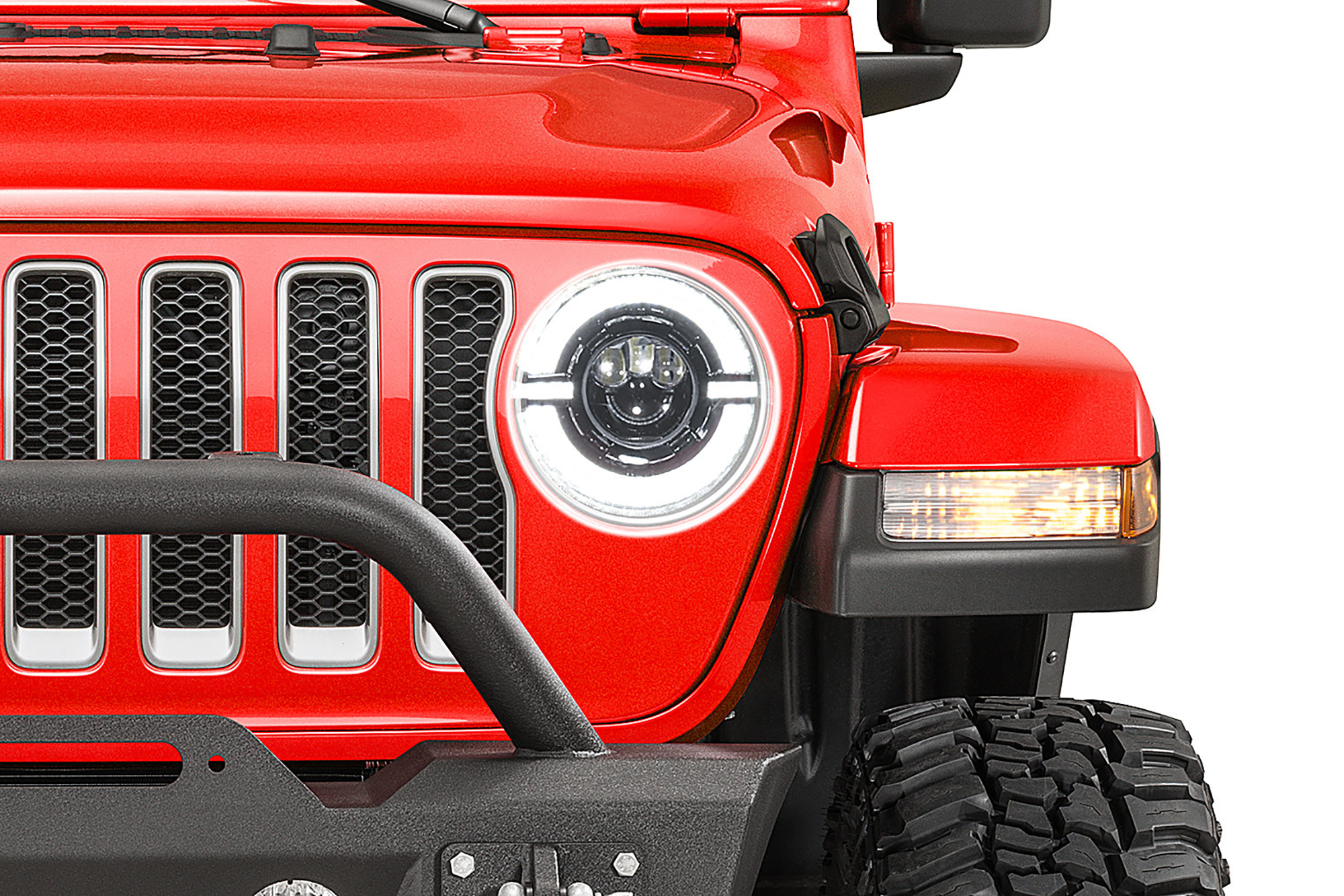
LED Headlights
When it comes to comparing factory halogen headlights to aftermarket LEDs, there actually really isn't a comparison. LED versions are brighter, allow for safer driving and draw less power. Not to mention, they last much, much longer. As a new Jeep owner, you may not understand just how underpowered those dim, weak factory lights are until you check out aftermarket LED lighting.
LEDs, or Light Emitting Diodes, are currently one of the hottest modifications around simply because their light output at both low and high beam is nearly double the factory headlight output. Yet, despite this powerful light, the amp draw is less than half what factory lights require.
More power, less amp draw. And thanks to all kinds of technology improvements over the past few years, more affordability as well. So it’s no wonder LED lights have jumped to the front of the line over other great options like HID and Xenon.
Now, within the spectrum of LED upgrades, there are essentially two types of headlights - reflector style and projector style housings. Both are great options and the difference between both styles is how they go about projecting the light down the road and the output pattern of light you see on the road surface.
Reflector Style LED Headlights look similar to the factory light, with a clear lens and fluted reflector at the back of the housing. The LED's are positioned in the center of the housing and bounce light off the reflector. These lights are usually divided into an upper and lower half, for low and high beam respectively.
Projector Style LED Headlights have a very distinct appearance. By positioning the LED behind a lens and cut-off shield, the light is more focused and the cut-off pattern of the light is much sharper than reflector style LEDs. This creates a more even pattern of light on the road. Projector style headlights also utilize separate LED and projector lenses for high and low beams, with some even featuring additional lenses for peripheral lighting to really light the road ahead.
Of course, with the additional lenses, the cost of projector style lights is usually slightly more than a reflector style LED. However both offer great advantages over the stock factory Jeep lights, so really it just comes down to personal preference in style, look, and how much cash you're willing to shell out.
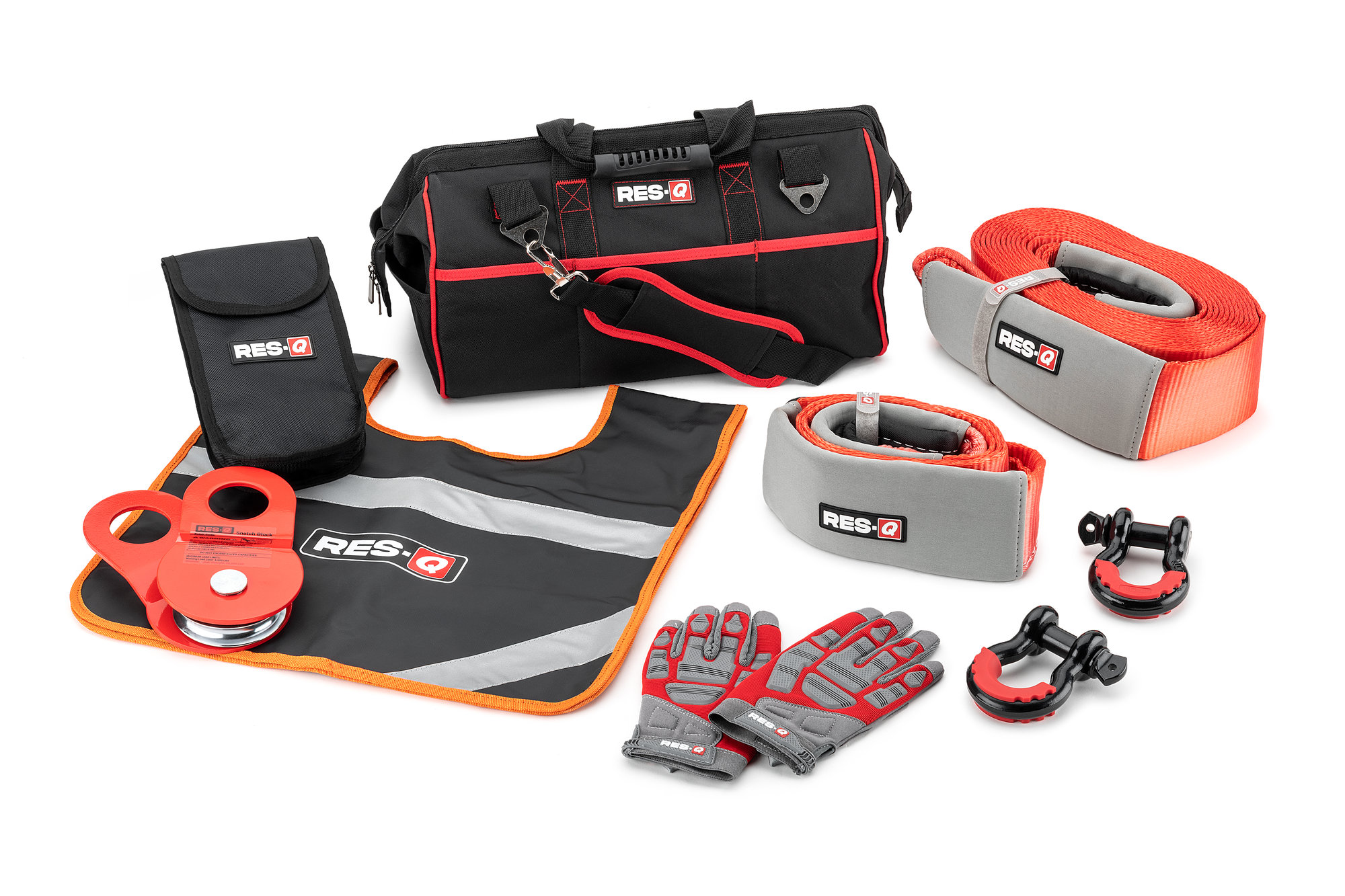
Recovery Gear
Whether your future plans include off-roading, or simply pavement driving, it is absolutely a smart idea as a new Jeep owner to upgrade the recovery capability of your vehicle. And this doesn’t mean springing for the newest massive hydraulic winch with hi-tech Synthetic line.
According to Off-Road Consulting’s Buchter, simple recovery items - as well as learning how your vehicle responds when using them - can be every day lifesavers should the occasion arise.
“Things like tow or recovery straps, gloves; a couple of D-rings,” he says. “Then getting to know the vehicle, learning how the systems work and how the Jeep responds. Knowledge, understanding and the ability to make smart decisions is one of the best things you can do.”
Most of the important recovery products good for new Jeepers are included in winch accessory kits – things like gloves, d-rings, or recovery straps which are designed to stretch out when used, providing kinetic energy to pull a vehicle from obstructions like sand, mud, or snow.
Other good items to have would be bumper tow hooks (most new Jeeps should have, but yours may not), a First Aid kit, fire extinguisher, and a heavy-duty jack like Hi-Lift.
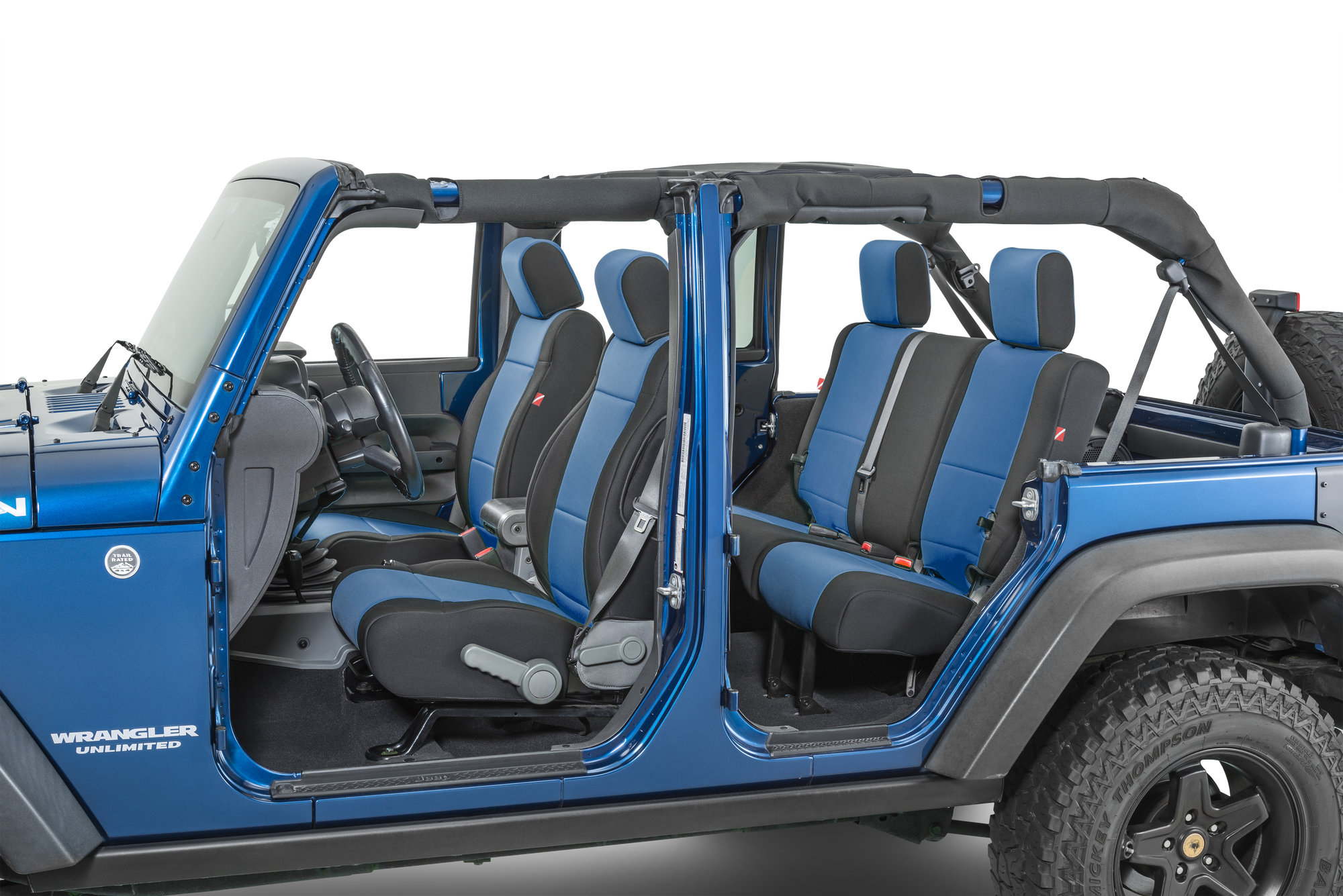
Seat Covers
New Jeep seats are great. Used seats, maybe not so much. But there is one thing they each have in common - the need to be protected. See, your Jeep isn't like a normal car. There may not always be a roof over your head to protect those seats because you know you'll take that top off on a nice day. It is just what you do with a Jeep. And when you do, it will expose those seats to the elements like sun, wind and (potentially) rain. All stuff that does not play well with seat material.
So getting protective seat covers made of things like neoprene, polyester, or nylon can go a long way to enhancing the lifespan of your Jeep's seats, while also giving you a chance to customize the vehicle's look. Many covers have several different color options so you can match up to your Jeep's color, an interior theme, or whatever else you have going on with the vehicle. Additionally, some even have pouches integrated into the cover or the ability to add MOLLE bags, which provide extra storage space. And that can be important as you learn more and more how limited storage space can be inside a Jeep.
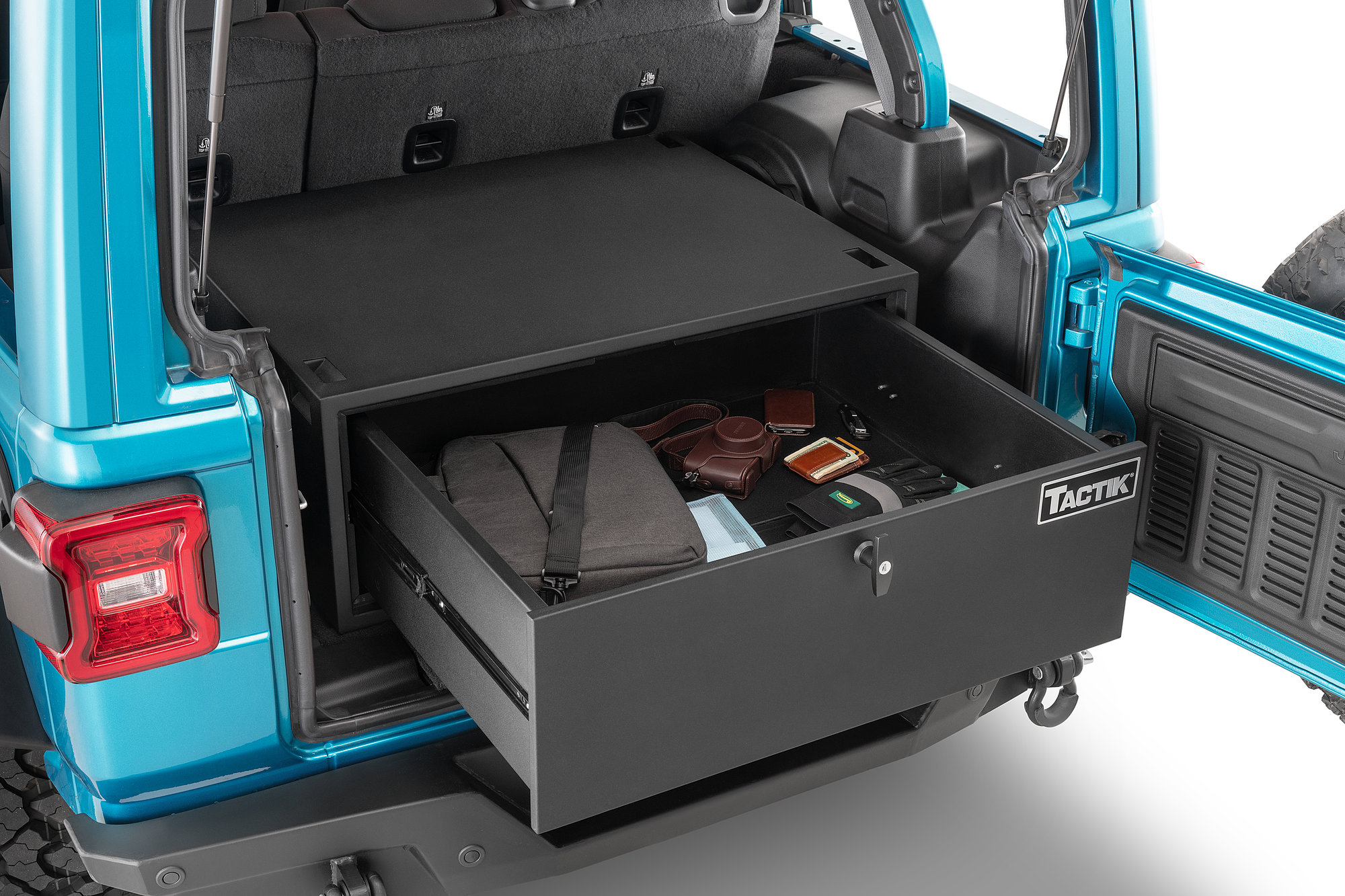
Interior Storage and Security
It is no secret that cargo space and security inside a Jeep is pretty limited – as you’ve probably found out. While the newer JK and JL Wrangler Unlimited models have a bit more room than their two-door compatriots, you may still struggle to find the space you need. Also, if you sport a soft top, or even just plan to take the hardtop off for a few months, safely securing that cargo can get worrisome. Sure the factory console has a lock, but so does your screen door and you wouldn’t feel safe just using that to protect your house when you go on vacation, right?
So, for interior cargo options, many first-time Jeep owners who need that security can look to solid 16-gauge steel lockable consoles either between the front seats, under seat, overhead, or even at the rear cargo area.
Other cargo storage options do a great job augmenting your Jeep’s available space by adding storage bags or packs to places such as the tailgate, roll cage, seats, or soundbar.
If you are on the go pretty much all the time, dash organizers can help sort through the clutter and provide additional space.
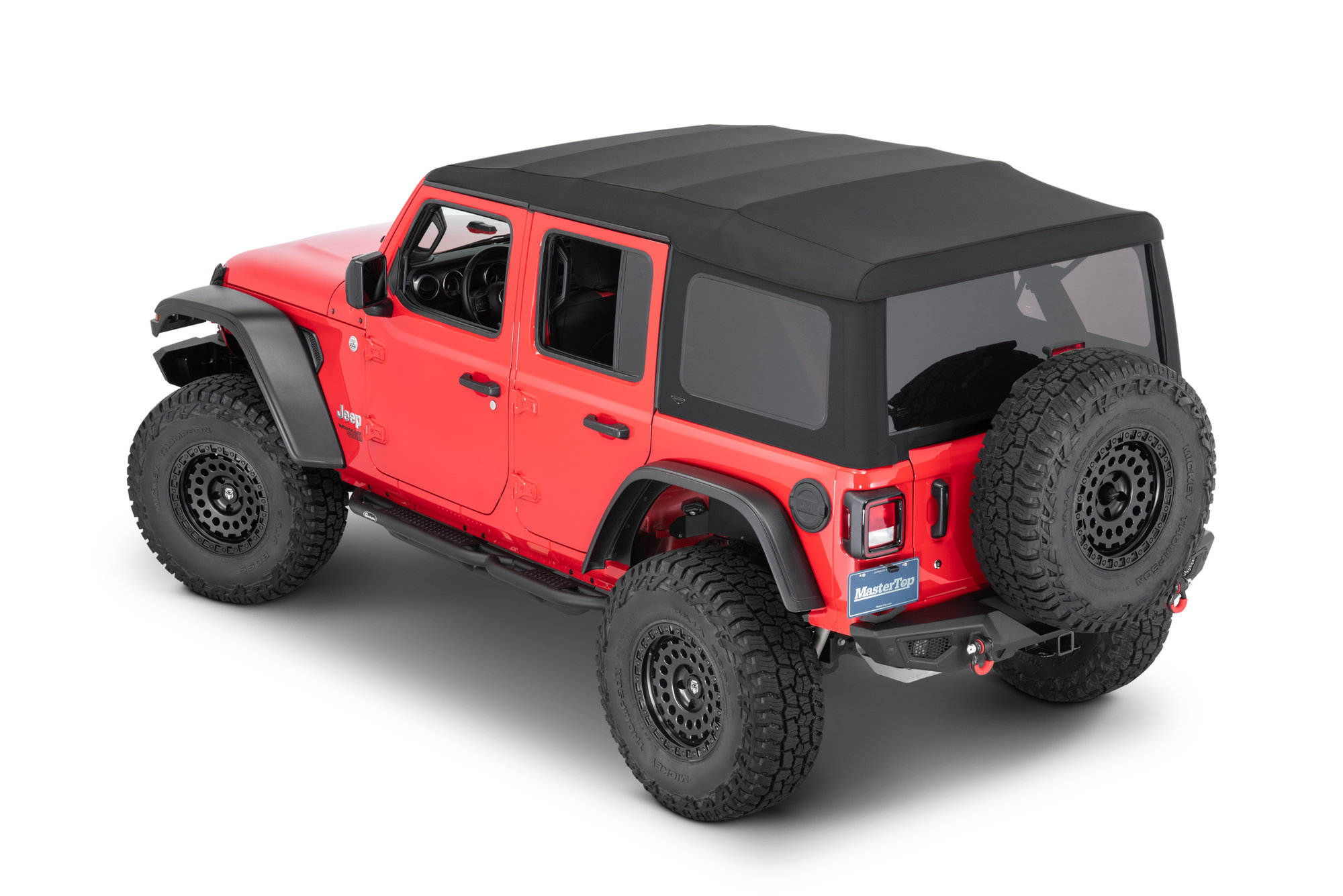
Soft Tops
Soft tops have an integral part in Jeep history. Part of its DNA, if you will. The ability to pull that top down on nice days, or zip out windows, makes for an open-cabin ride unlike just about anything else on the market.
On the other hand, hardtops came along and certainly provide more durability, security, and an efficiently quieter ride than soft tops - but all at the expense of that ‘Jeep open air’ feel.
Well, in many cases, modifying that Jeep to include a soft top is must for nearly every new Jeep owner simply for the ability to enjoy your Jeep to its full potential. You are never just ‘stuck’ with the top you have when you own a Jeep.
For many first-time Jeep owners, a hardtop Jeep is all they know. Whether it was the salesperson who talked up that hardtop until you said ‘yes’, or the Jeep you really wanted just came that way, it really is not difficult to enhance your vehicle’s look by adding a soft top.
These days, soft tops come in all shapes and sizes from full-blown replacement tops with all mounting hardware included, to popular new frameless soft tops, to simple – yet efficient – bimini tops that you can install after (carefully) removing your hardtop.
You may just want to try a ‘summer type’ soft top solution such as a bimini, windbreaker and tonneau rear cover when you remove the hard top. This will mostly open up your Jeep’s interior without leaving you totally exposed in the open air all the time.
Or, perhaps, you decide a total soft top replacement – hardware and all – is the way to go because you really love the idea of pulling the entire top up or down at your leisure.
But even if your Jeep did not come with a hard top, you still may need to upgrade the top on your ‘new to you’ Jeep.
Soft tops generally have about a 3-5 year lifespan and, while factory soft tops have gotten better and better over the years, they can eventually stretch out and no longer fit into the Jeep’s grooves, or begin to have stitching issues. Sometimes the windows can encounter zipper problems and need replacement. Luckily, all of these things are affordably replaceable; either through a full canvas-only top, or simply going the piece by piece road.
Whether just for practicality, or the desire to experience exhilarating open air driving, upgrading and modifying your vehicle with a soft top is a perfect solution for the first-time Jeep owner looking to enjoy their vehicle the way its founders intended.
Related Articles:
Best Jeep Interior Products For Topless Driving












